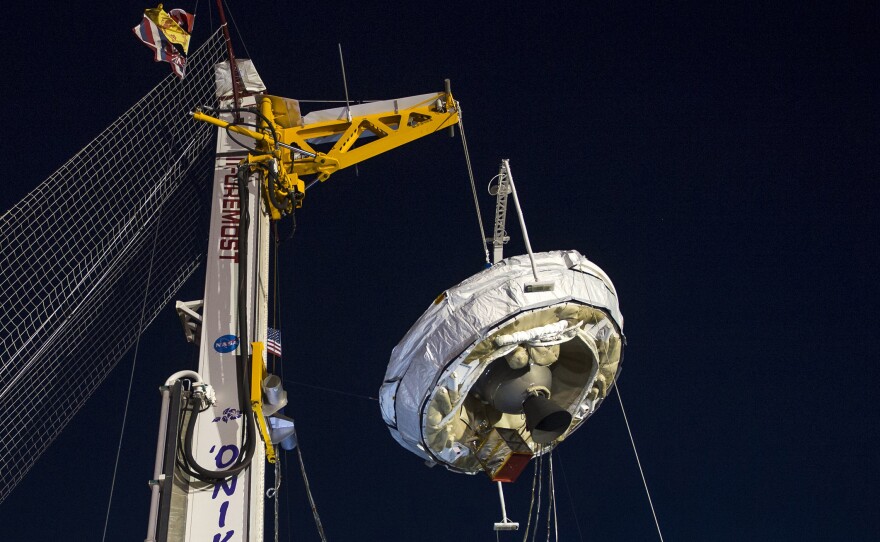
It's a big day for NASA: The agency's new "flying saucer" is getting a crucial test, part of a plan to land on Mars someday. A giant balloon is carrying the Low-Density Supersonic Decelerator to an altitude of 120,000 feet. Then it'll go even higher — and engineers hope its parachute guides it safely to the surface.
You can watch NASA TV online – the balloon is expected to reach its float altitude around 4:45 p.m. ET.
Once it reaches float altitude, the LDSD will act like very much like you would expect a flying saucer to behave: it will spin. Then a main rocket will send it up even higher and much faster — to 180,000 feet, and moving at more than four times the speed of sound.
The high altitude is a crucial part of the test, as it's seen as the best way to simulate Mars' thin atmosphere. A similar test of the 7,000-pound craft's landing systems went well last summer — until the parachute failed and the unit plummeted toward the ocean.
Both the parachute and the LDSD's shape are meant to help it slow down enough to safely land both equipment and humans on another planet.
Last June, Daniel Lockney, NASA's technology transfer program executive, told NPR about the thinking behind the LDSD:
"You need to slow down the spacecraft before you can gently land it onto the surface. You know, you don't want to go careening into the surface of Mars after spending all that time to get there. "Typically, we've been using the technology - a parachute technology that we developed during Viking Lander era. And it's the same thing that we used to get Curiosity to slow down in 2012 for that landing. "And the idea is that we would have larger, heavier spacecraft that need newer technologies - more advanced technologies to help slow them down. So instead of a parachute, it's kind of a long - almost like a blob - that's a flying saucer that will slow down the spacecraft before it reaches the atmosphere."
Copyright 2015 NPR. To see more, visit http://www.npr.org/.







